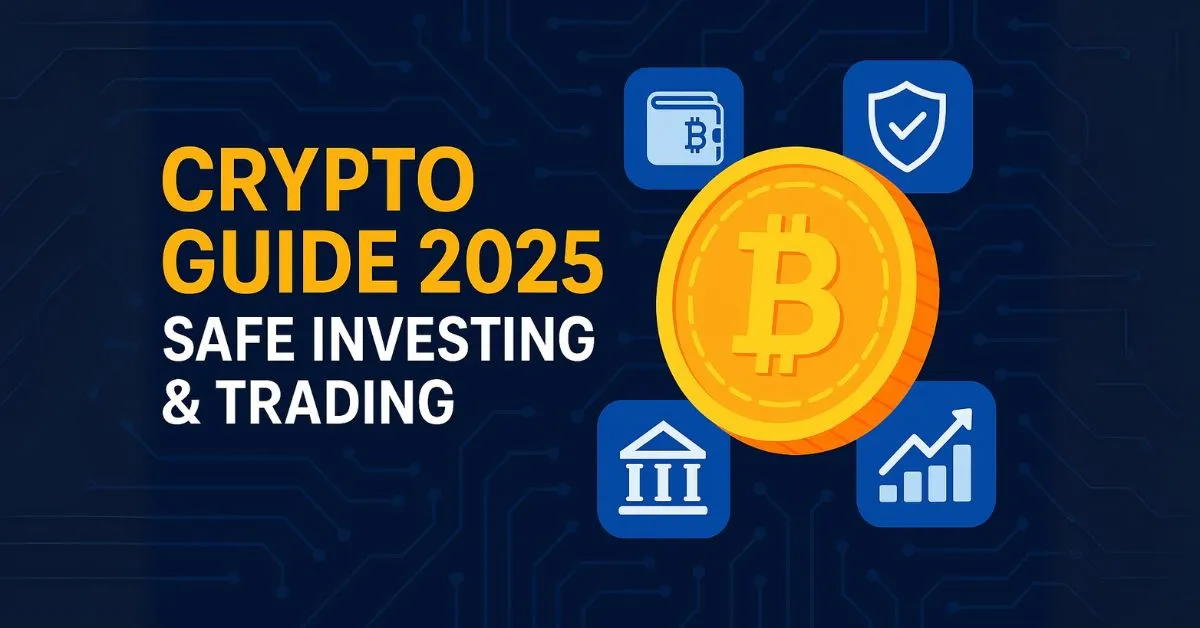
Crypto Guide 2025: Safe Investing & Trading
1. What is Crypto?
Cryptocurrency is a form of digital money that operates on blockchain technology – a decentralized public ledger that is not controlled by central banks. Crypto uses cryptographic methods to ensure the security and verification of all transactions, enabling fast, borderless, and transparent money transfers. Notable examples include Bitcoin, Ethereum, and many other altcoins.

2. Blockchain Technology & How It Works
Blockchain records every transaction in blocks and updates them synchronously across network nodes. Each transaction must be validated through a consensus mechanism (Proof-of-Work or Proof-of-Stake), ensuring immutability and preventing fraud. This is the foundation that makes crypto decentralized and transparent.

3. Choosing A Reliable Exchange
You should choose major exchanges such as Binance, Coinbase, or Kraken. Key factors to consider include regulatory compliance and KYC procedures, strong security (2FA), competitive trading fees, and support for multiple cryptocurrencies. Also, check user reviews, service quality, and the liquidity of each exchange.
4. Setting Up a Secure Crypto Wallet
• Hot Wallet: Connected to the internet, convenient for quick transactions but carries a higher risk of hacking.
• Cold Wallet: Stored offline with maximum security, suitable for holding medium to large amounts.
Always enable two-factor authentication (2FA), handle your seed phrase carefully, and securely back up your recovery phrase.
5. How to Buy Crypto for the First Time
The first step is to create an account on an exchange, verify your identity, and deposit funds (fiat or crypto). For your initial purchase, you can use a market order for instant execution or a limit order to buy at your preferred price. Bitcoin and Ethereum are common first choices due to their high liquidity and relative stability.
6. Investment & Trading Strategies
• HODL: Buy and hold long-term.
• DCA (Dollar-Cost Averaging): Invest a fixed amount regularly to reduce price volatility.
• Short-term trading: Day trading, swing trading, or scalping using charts and technical analysis.
• Futures, margin, staking & DeFi: Beginners should learn gradually and start with small amounts.
7. Building a Sample Investment Portfolio
A reasonable allocation example: Bitcoin (40%) – Ethereum (30%) – Potential Altcoins (20%) – Stablecoins (10%). You can stake a portion of your stablecoins for passive income and consider rebalancing your portfolio quarterly.
8. Managing Profits & Reinvesting
Set specific profit-taking targets (e.g., 30% or 50% gains). After taking partial profits, you can reinvest in other coins or use staking/DeFi to maintain growth. Don’t forget to account for taxes when necessary and keep track of market movements.
9. Securing Assets & Avoiding Risks
Follow official KYC procedures from exchanges, avoid phishing websites, and never invest more than you can afford to lose. Always do your own research (DYOR) before buying new coins or participating in ICOs. Limit personal information sharing and stay updated on regulations and market news.
10. Conclusion
Crypto is a continuous learning journey. Starting with the basics above will give you a solid foundation to explore technical analysis, staking, DeFi, or advanced trading strategies. Safety, stability, and efficiency are key principles for beginners and experienced investors alike.